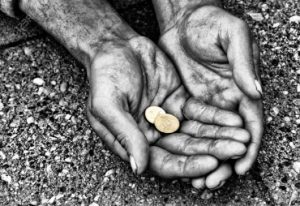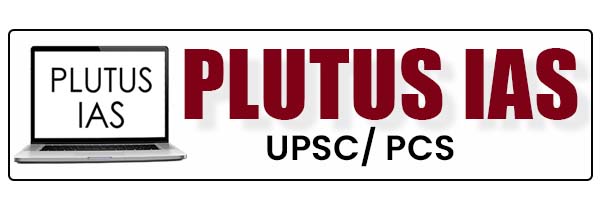05 Oct Status of poverty, inequality, unemployment
Poverty, Inequality, and Unemployment
The topic is based on “Poverty, Inequality, and Unemployment”. The article talks about how Poverty and Unemployment impact the Indian Economy and Social development.
Prelims: Economic and Social Development-Sustainable Development, Poverty, Inclusion, Demographics, Social Sector Initiatives, etc.
Mains: General Studies III: Inclusive growth and issues arising from it.
Why in headlines?
RSS general secretary Dattatreya Hosabale put forward the issues of poverty, unemployment, and rising inequality in the country in a webinar organized by RSS-affiliated Swadeshi, Jagran Manch.

Pic: Poverty and Unemployment
Who is Dattatreya Hosabale?
- He was born in Sorab in Shivamogga, Hosabale, he is a 65-years, a postgraduate in English literature, He has grown in RSS, which he joined in 1968.
- At first, he was associated with the Akhil Bharatiya Vidyarthi Parishad (ABVP), the student wing of the RSS, and there he became an organizer of the RSS.
- He can speak various languages including English, Tamil, Sanskrit, and Marathi among others.
- Dattatreya Hosabale served as the Joint General Secretary of the RSS.
- At present, he is holding the responsibility for the next three years in the post of Sarkaryavah.
What did Hosable Say?
- 20 crore people are still below the poverty line
- According to Quoting United Nations observations on poverty and development as many as 23 crores, of people have less than Rs 375 income per day
- A large part of the country still does not have access to clean water and nutritious food
- Civil strife and the poor level of education are also a reason for poverty
- There are four crore unemployed people in the country.
- The labor force survey says we have an unemployment rate of 7.6 percent
Poverty
What is poverty?
- Poverty is a condition or state, of a person or a community, in which there is a scarcity of financial resources and essentials needed to live a minimum standard of living.
- Poverty indicates that the income level from employment is so minimum that basic human needs can’t be met.
- As per the World Bank, Poverty is pronounced deprivation in well-being and comprises many dimensions, it also includes low income and the inability to acquire the basic goods and services necessary for survival with dignity.
- Poverty also encircles the petty of health and education, poor access to clean water and sanitation, inadequate physical security, lack of voice, and insufficient capacity and opportunity to better one’s life.
- In India, 21.9% of the population lives below the national poverty line in 2011.
- In 2018, almost 8% of the world’s workers and their families lived on less than US$1.90 per person per day (international poverty line).
Types of Poverty:
Absolute Poverty:
- It is also called extreme poverty; it implicates the scarcity of basic food, clean water, health, shelter, education and information.
- Absolute Poverty is usually uncommon in developed countries
Relative Poverty:
- It is a type of poverty that defines the social perspective which is living standards compared to the economic standards of the population living in the surroundings.
- Therefore it is a measure of income inequality.
Rural Poverty:
- It happens in rural areas, where there are limited job opportunities, limited access to services, limited support for disabilities and limited quality education opportunities.
Urban Poverty:
- The prime challenges faced by Urban people, because of Poverty includes:
- Inadequate housing and services
- Violent and unhealthy environment because of overcrowding
- Less or no social protection mechanism.
The main reasons for Poverty:
- Rapidly increasing population.
- Less productivity in agriculture.
- Less utilization of resources.
- A short rate of economic development.
- Increasing price rise.
- Unemployment.
Inequality
What is Inequality?
- India is one of the most unequal countries in the world.
- According to the World Inequality Report 2022
- India stands out as a “poor and very unequal country, with an affluent elite”, where the top 10 percent holds 57 percent of the total national income while the bottom 50 percent’s share is just 13 percent in 2021
- The average annual national income of the Indian adult population is Rs 2,04,200 in 2021.
- The bottom 50 percent earned Rs 53,610, while the top 10 percent earned over 20 times more (Rs 11,66,520), the report states
- In India, the top 10% and top 1% hold 57% and 22% of the total national income respectively while the share of the bottom 50% has gone down to 13%.
Reasons for the inequality in India:
- Large-scale informal employment.
- Historical reasons.
- Females were always treated to be subordinate and weaker to males. Girl education is considered to be a burden on the family and women have limited choices in employment.
- A huge proportion of the population is still dependent on agriculture but the share of agriculture in the total GDP is falling.
Unemployment
What is Unemployment?
- Unemployment is a state in which a person who is actively searching for employment is unable to find work despite being skilled or talented or educated.
- Unemployment is often used as a parameter to measure the health of the economy.
Types of Unemployment in India
Disguised Unemployment:
- It is a type of unemployment, in which more people are employed than actually needed.
- It is primarily traced to the agricultural and unorganized sectors of India.
Seasonal Unemployment:
- This type of unemployment happens during a certain period of the year.
- Agricultural laborers in India often go through this unemployment.
Structural Unemployment:
- This unemployment arises when there is a dissimilarity between the jobs available in the market and the skills of the available workers in the market.
Cyclical Unemployment:
- It is a consequence of the business cycle, where unemployment rises during recessions and declines with economic growth.
- Cyclical unemployment figures in India are negligible.
- It is a phenomenon that is mostly found in capitalist economies.
Technological Unemployment:
- A person who lost their job because of a change in Technology.
- In 2016, World Bank data predicted that the proportion of jobs threatened by automation in India is 69% year-on-year.
Vulnerable Employment:
- This type of unemployment is commonly seen in India.
- In this unemployment, people work informally, without proper job contracts, and thus sans any legal protection.
- These persons are deemed ‘unemployed’ since records of their work are never maintained.
- India has committed to attaining the Sustainable Development Goals by 2030, and to ending extreme poverty by that year.
- As per Oxfam, if India stops inequality from rising further, it could end extreme poverty for 90 million people by 2019. If it goes further and reduces inequality by 36%, it could virtually eliminate extreme poverty.
Sources
Daily Current affairs for UPSC
Nowadays current affairs are a part and parcel of any competitive exams. Every UPSC and IAS aspirant should read daily current affairs for UPSC exams. Without reading new current affairs, No one can acquire general knowledge. That’s why every UPSC aspirant should read current affairs in English for increasing their communication skills. so all the examinees of any competitive examinations should read important current affairs regularly.
Here PlutusIAS provides IAS current affairs free of cost. You get the top 10 current affairs for your competitive exam preparation. So read the best daily current affairs for UPSC examination from us.



No Comments